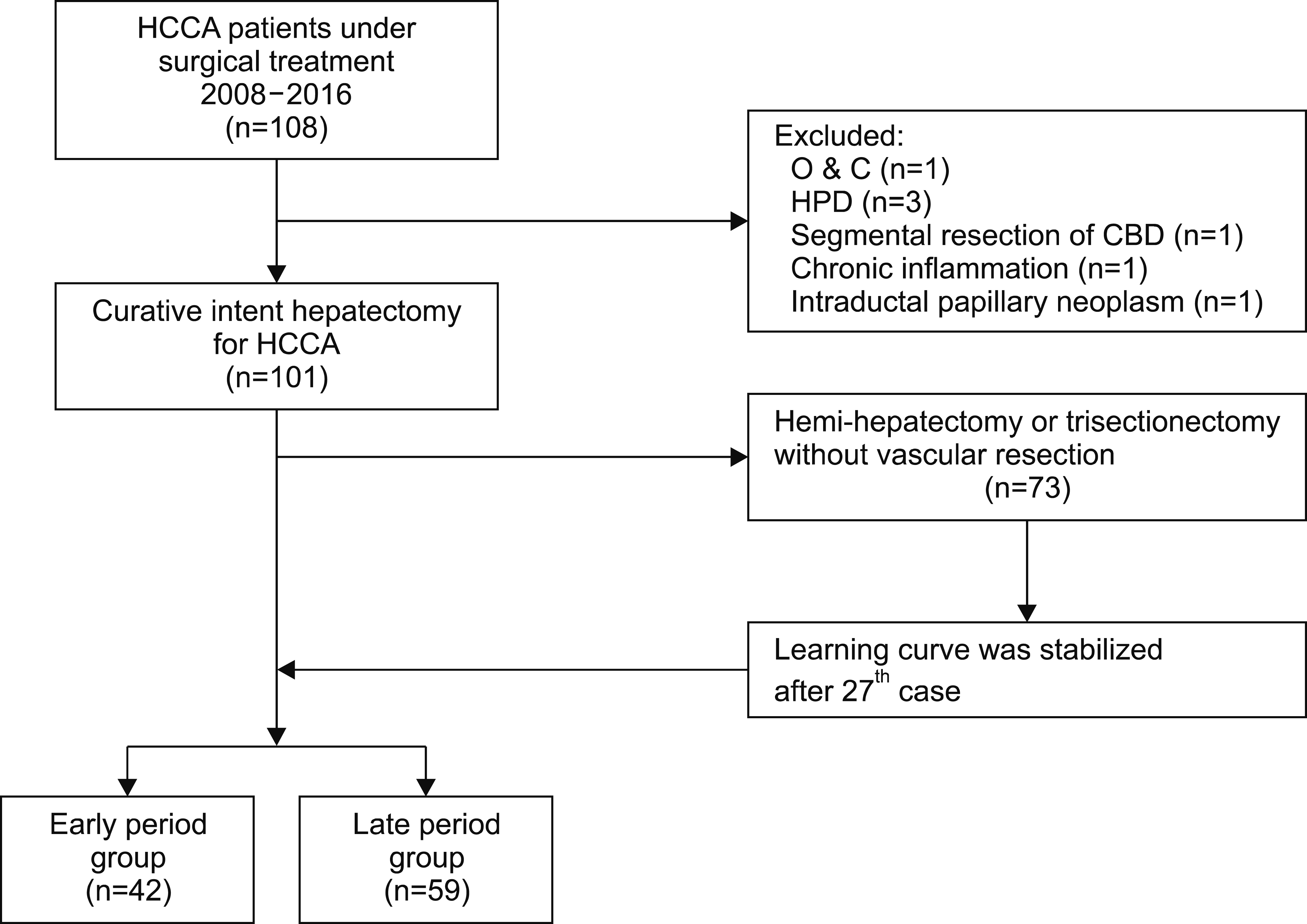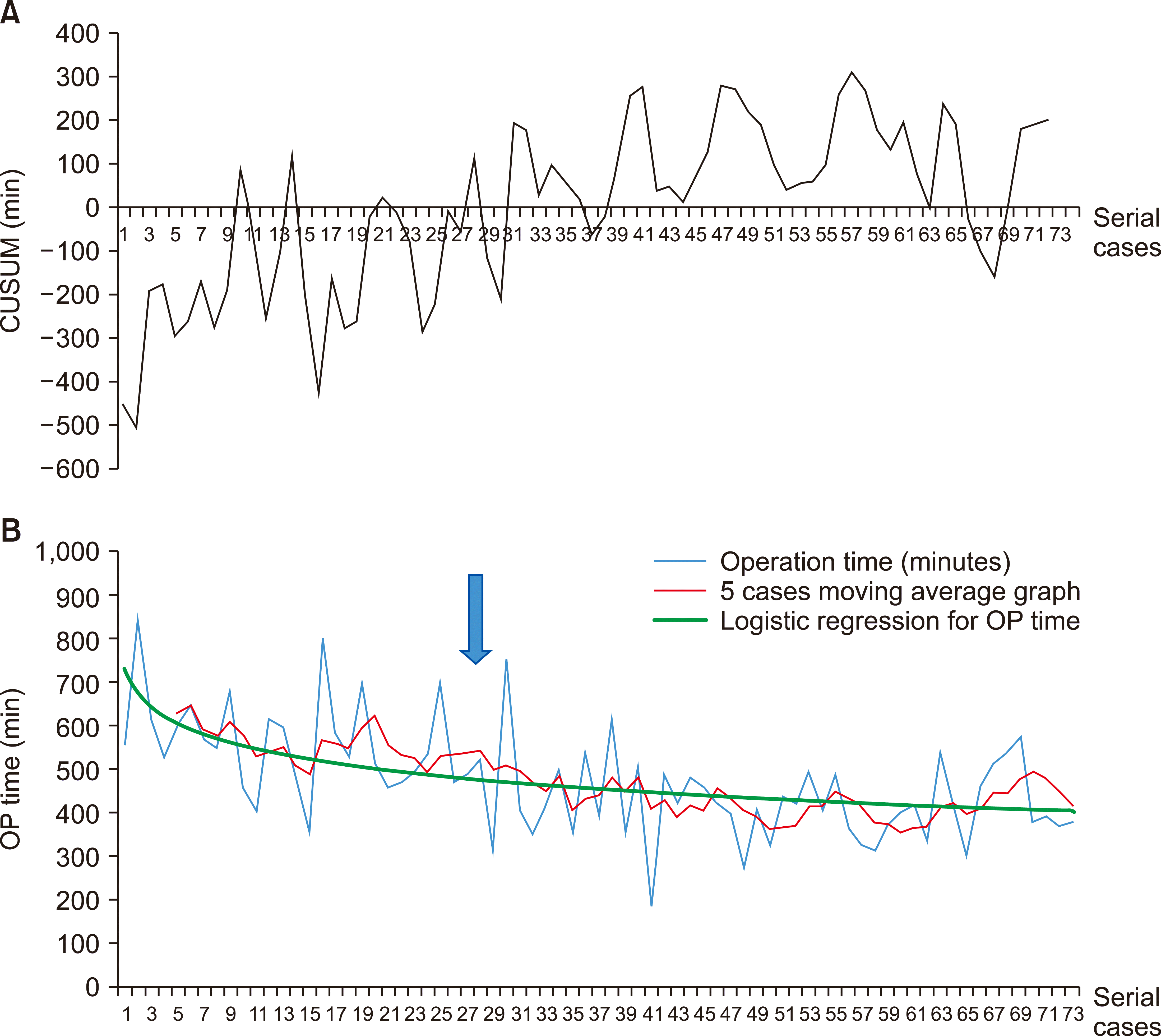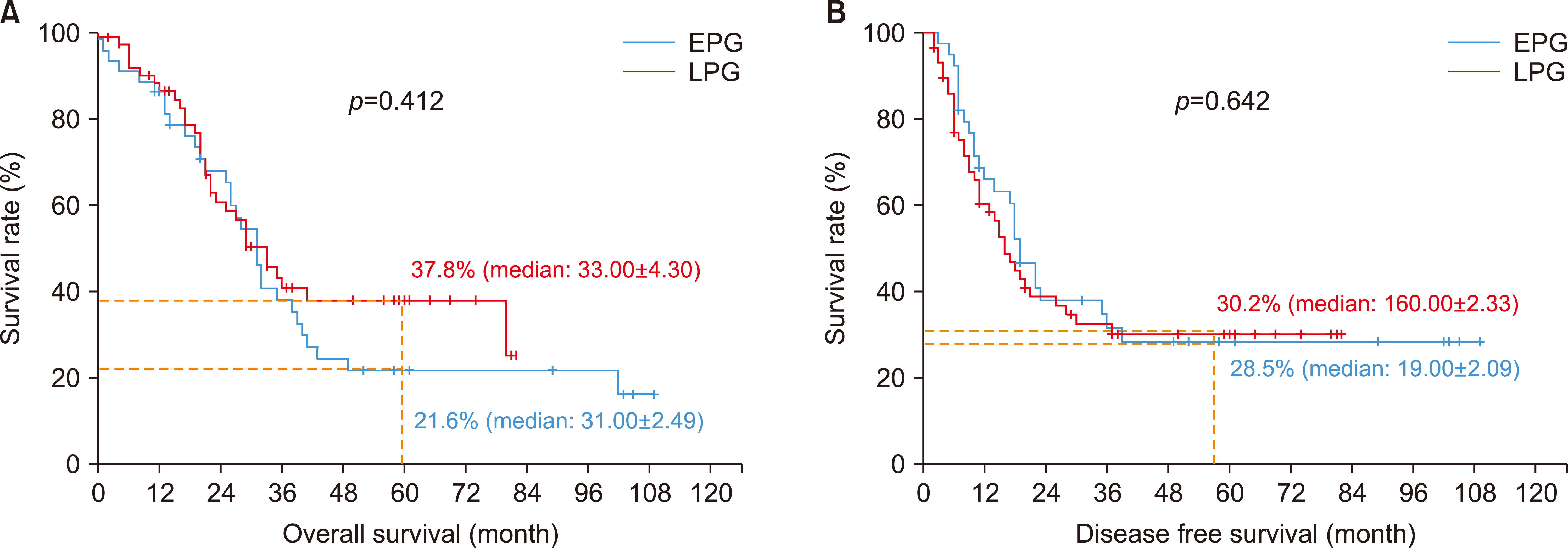2. Mizuno T, Ebata T, Nagino M. 2020; Advanced hilar cholangiocarcinoma: an aggressive surgical approach for the treatment of advanced hilar cholangiocarcinoma: perioperative management, extended procedures, and multidisciplinary approaches. Surg Oncol. 33:201–206. DOI:
10.1016/j.suronc.2019.07.002. PMID:
31301935.


3. Sakata J, Ebata T, Wakai T. 2018; Evolution of radical resection for perihilar cholangiocarcinoma. J Hepatobiliary Pancreat Sci. 25:249–251. DOI:
10.1002/jhbp.534. PMID:
29327514.


4. Wang M, Meng L, Cai Y, Li Y, Wang X, Zhang Z, et al. 2016; Learning curve for laparoscopic pancreaticoduodenectomy: a CUSUM analysis. J Gastrointest Surg. 20:924–935. DOI:
10.1007/s11605-016-3105-3. PMID:
26902090.


5. Olthof PB, Miyasaka M, Koerkamp BG, Wiggers JK, Jarnagin WR, Noji T, et al. 2019; A comparison of treatment and outcomes of perihilar cholangiocarcinoma between Eastern and Western centers. HPB (Oxford). 21:345–351. DOI:
10.1016/j.hpb.2018.07.014. PMID:
30087051. PMCID:
PMC7534176.


6. Ratti F, Cipriani F, Fiorentini G, Hidalgo Salinas C, Catena M, Paganelli M, et al. 2019; Management of hilum infiltrating tumors of the liver: the impact of experience and standardization on outcome. Dig Liver Dis. 51:135–141. DOI:
10.1016/j.dld.2018.07.006. PMID:
30115572.


7. Peng DZ, Lu J, Li B, Hu HJ, Ye XW, Xiong XZ, et al. 2019; A simple scoring system to predict early recurrence of Bismuth-Corlette type IV perihilar cholangiocarcinoma. Gastroenterol Rep (Oxf). 7:345–353. DOI:
10.1093/gastro/goz012. PMID:
31687154. PMCID:
PMC6821250.



8. Tran TB, Ethun CG, Pawlik TM, Schmidt C, Beal EW, Fields RC, et al. 2019; Actual 5-year survivors after surgical resection of hilar cholangiocarcinoma. Ann Surg Oncol. 26:611–618. DOI:
10.1245/s10434-018-7075-4. PMID:
30539494.


9. Juntermanns B, Kaiser GM, Reis H, Gries S, Kasper S, Paul A, et al. 2019; Long-term survival after resection for perihilar cholangiocarcinoma: impact of UICC staging and surgical procedure. Turk J Gastroenterol. 30:454–460. DOI:
10.5152/tjg.2019.18275. PMID:
31061000. PMCID:
PMC6505650.


10. Valsamis EM, Chouari T, O'Dowd-Booth C, Rogers B, Ricketts D. 2018; Learning curves in surgery: variables, analysis and applications. Postgrad Med J. 94:525–530. DOI:
10.1136/postgradmedj-2018-135880. PMID:
30209180.

11. Matsuyama R, Morioka D, Mori R, Yabushita Y, Hiratani S, Ota Y, et al. 2019; Our rationale of initiating neoadjuvant chemotherapy for hilar cholangiocarcinoma: a proposal of criteria for "borderline resectable" in the field of surgery for hilar cholangiocarcinoma. World J Surg. 43:1094–1104. DOI:
10.1007/s00268-018-04883-y. PMID:
30536024.


12. Kimura N, Young AL, Toyoki Y, Wyatt JI, Toogood GJ, Hidalgo E, et al. 2017; Radical operation for hilar cholangiocarcinoma in comparable Eastern and Western centers: outcome analysis and prognostic factors. Surgery. 162:500–514. DOI:
10.1016/j.surg.2017.03.017. PMID:
28551378.


13. Gao Y, Xu D, Wu YS, Chen D, Xiong W. 2019; Increasing negative lymph node count is independently associated with improved long-term survival in resectable perihilar cholangiocarcinomas. Medicine (Baltimore). 98:e14943. DOI:
10.1097/MD.0000000000014943. PMID:
30985643. PMCID:
PMC6485858.

14. Gaspersz MP, Buettner S, Roos E, van Vugt JLA, Coelen RJS, Vugts J, et al. 2018; A preoperative prognostic model to predict surgical success in patients with perihilar cholangiocarcinoma. J Surg Oncol. 118:469–476. DOI:
10.1002/jso.25174. PMID:
30132904.


15. He M, Xu X, Feng H, Chen W, Liu H, Zhang Y, et al. 2019; Regional lymphadenectomy vs. extended lymphadenectomy for hilar cholangiocarcinoma (Relay-HC trial): study protocol for a prospective, multicenter, randomized controlled trial. Trials. 20:528. DOI:
10.1186/s13063-019-3605-z. PMID:
31443731. PMCID:
PMC6708245.



16. Higuchi R, Yazawa T, Uemura S, Izumo W, Ota T, Kiyohara K, et al. 2019; Surgical outcomes for perihilar cholangiocarcinoma with vascular invasion. J Gastrointest Surg. 23:1443–1453. DOI:
10.1007/s11605-018-3948-x. PMID:
30203230.


17. Kambakamba P, Linecker M, Slankamenac K, DeOliveira ML. 2015; Lymph node dissection in resectable perihilar cholangiocarcinoma: a systematic review. Am J Surg. 210:694–701. DOI:
10.1016/j.amjsurg.2015.05.015. PMID:
26212390.


18. Komaya K, Ebata T, Yokoyama Y, Igami T, Sugawara G, Mizuno T, et al. 2018; Recurrence after curative-intent resection of perihilar cholangiocarcinoma: analysis of a large cohort with a close postoperative follow-up approach. Surgery. 163:732–738. DOI:
10.1016/j.surg.2017.08.011. PMID:
29336813.

19. Lin H, Wu YS, Li Z, Jiang Y. 2018; Prognostic value of retrieved lymph node counts in patients with node-negative perihilar cholangiocarcinomas. ANZ J Surg. 88:E829–E834. DOI:
10.1111/ans.14775. PMID:
30207026.

20. Lurje G, Bednarsch J, Czigany Z, Lurje I, Schlebusch IK, Boecker J, et al. 2019; The prognostic role of lymphovascular invasion and lymph node metastasis in perihilar and intrahepatic cholangiocarcinoma. Eur J Surg Oncol. 45:1468–1478. DOI:
10.1016/j.ejso.2019.04.019. PMID:
31053477.


22. Chaudhary RJ, Higuchi R, Nagino M, Unno M, Ohtsuka M, Endo I, et al. 2019; Survey of preoperative management protocol for perihilar cholangiocarcinoma at 10 Japanese high-volume centers with a combined experience of 2,778 cases. J Hepatobiliary Pancreat Sci. 26:490–502. DOI:
10.1002/jhbp.668. PMID:
31520452.









 PDF
PDF Citation
Citation Print
Print



 XML Download
XML Download